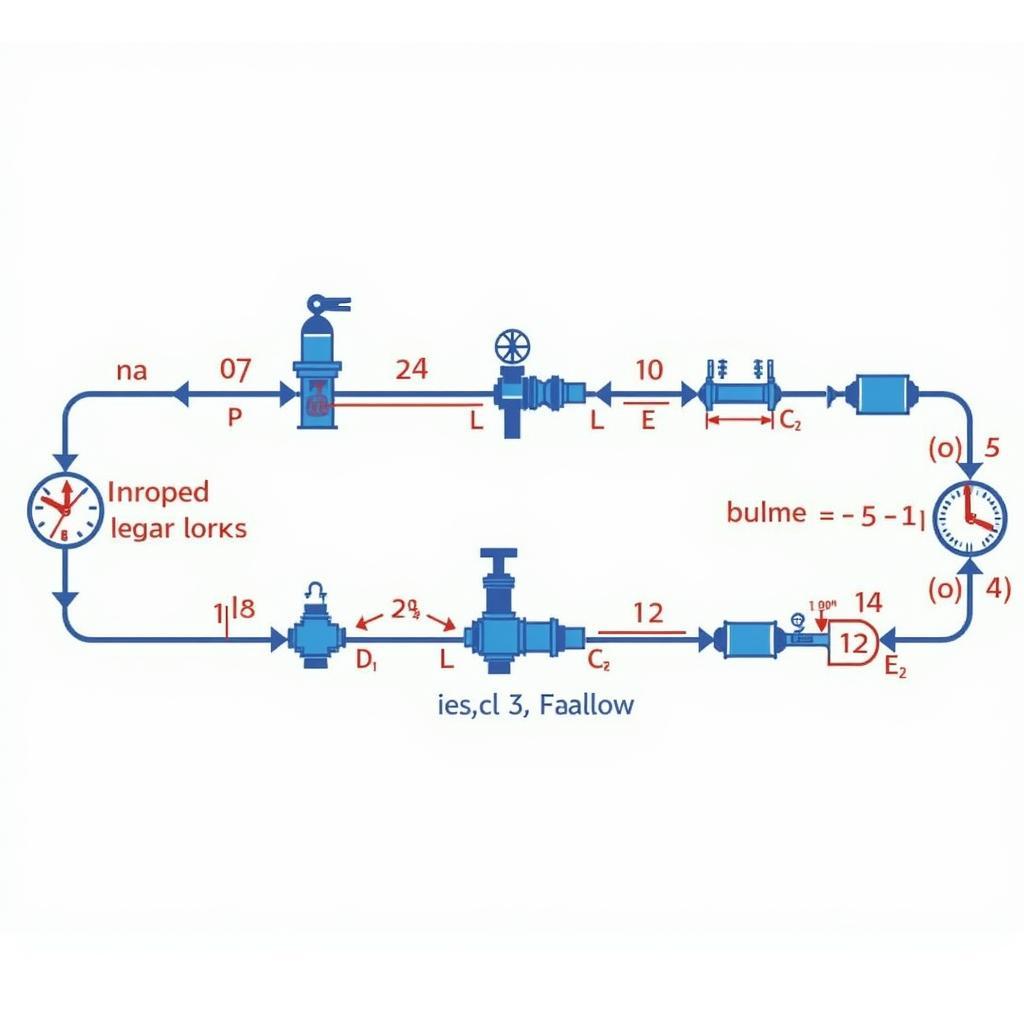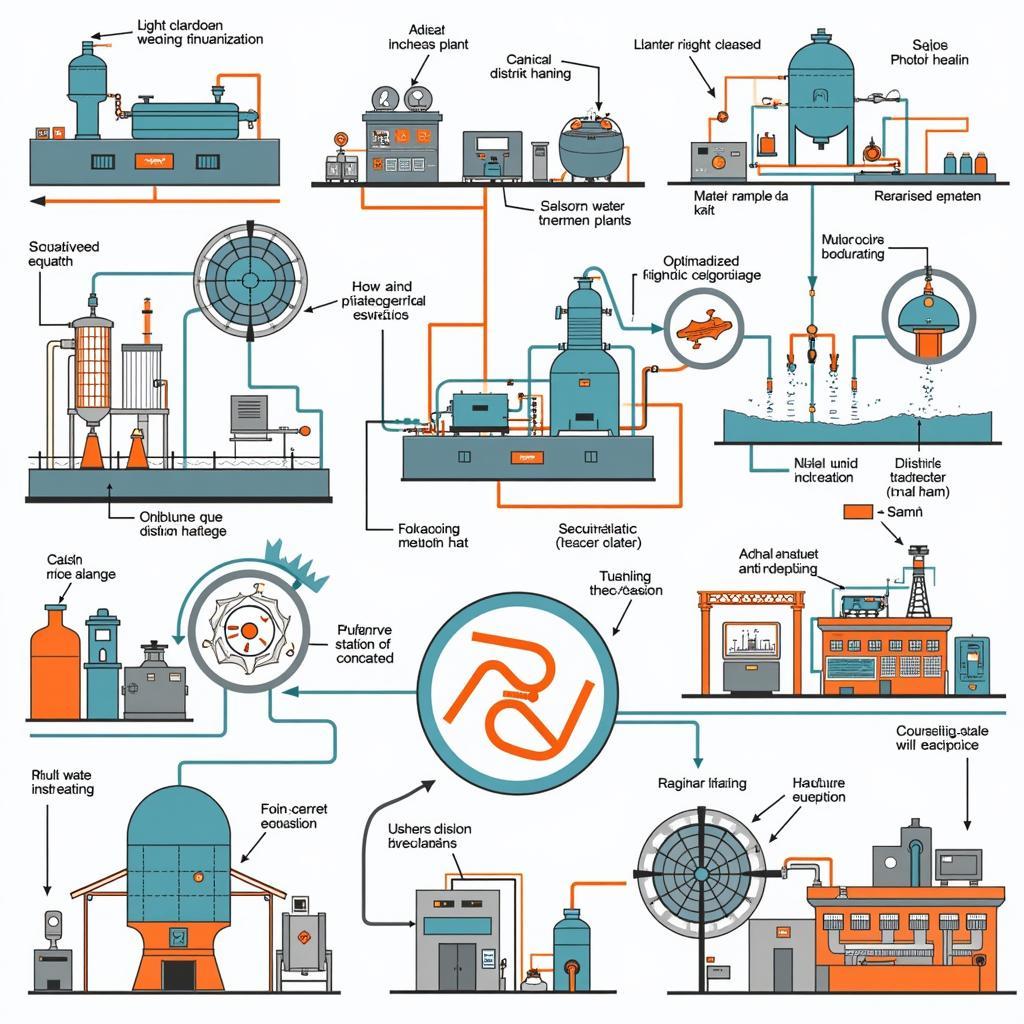Understanding Pressure Loss in Pipe Haaland
November 13, 2024Pressure loss in pipe, a critical factor in fluid dynamics, significantly impacts system efficiency. This article delves into the intricacies of pressure loss calculation, focusing on the Haaland equation, a widely used method for determining friction factor, a key component in pressure drop estimations.
Understanding the factors contributing to pressure loss is crucial for optimizing pipeline design and operation. These factors include pipe diameter, fluid velocity, pipe roughness, and fluid properties. Accurately predicting pressure drop enables engineers to select appropriate pumping equipment, minimize energy consumption, and ensure system reliability. haaland friction factor A precise understanding of these dynamics is essential for various applications, from oil and gas transportation to water distribution systems.
What Factors Influence Pressure Loss in Pipe?
Several factors influence pressure loss in pipe systems. Key among them are pipe diameter, fluid velocity, pipe roughness, and fluid viscosity.
- Pipe Diameter: A smaller pipe diameter leads to increased friction and higher pressure loss.
- Fluid Velocity: Higher fluid velocity results in greater friction and thus higher pressure loss.
- Pipe Roughness: Rougher pipe surfaces create more friction, increasing pressure loss.
- Fluid Viscosity: More viscous fluids experience higher resistance to flow, leading to increased pressure loss.
How Does the Haaland Equation Help Calculate Friction Factor?
The Haaland equation provides an explicit way to calculate the Darcy friction factor, a crucial parameter in determining pressure loss. This equation offers a more practical approach compared to the implicit Colebrook-White equation, simplifying calculations without significant loss of accuracy. The Haaland equation is particularly useful for turbulent flow regimes, which are common in many industrial applications.
 Factors Affecting Pressure Loss in Pipes
Factors Affecting Pressure Loss in Pipes
Applying the Haaland Equation in Real-World Scenarios
The Haaland equation’s practical application extends to diverse fields like oil and gas, water management, and chemical processing. In oil and gas pipelines, accurate pressure loss calculations are essential for optimizing flow rates and minimizing pumping costs. In water distribution systems, the equation helps ensure adequate water pressure at various points.
What are the benefits of using the Haaland Equation?
The Haaland equation provides several advantages over other methods:
- Explicit Solution: It offers a direct solution for the friction factor, simplifying calculations.
- Accuracy: It provides accurate results, comparable to the more complex Colebrook-White equation.
- Ease of Use: Its simpler form makes it readily applicable in various engineering software and calculations.
 Haaland Equation Application in Oil and Gas Pipeline
Haaland Equation Application in Oil and Gas Pipeline
A prominent expert in fluid mechanics, Dr. Emily Carter from the University of California, Berkeley, emphasizes the importance of accurate friction factor calculation: “Precisely determining the friction factor is fundamental for optimizing pipeline design and operation. The Haaland equation provides a reliable and efficient method for achieving this, leading to significant cost savings and improved system performance.”
Haaland Equation and its Significance in Modern Engineering
The Haaland equation remains a valuable tool for engineers in various disciplines. Its simplicity and accuracy make it a preferred choice for pressure loss calculations in a wide range of applications. By understanding and applying this equation, engineers can ensure efficient and reliable operation of fluid transport systems.
 Haaland Equation in Modern Engineering Applications
Haaland Equation in Modern Engineering Applications
Professor John Miller, a renowned expert in pipeline engineering from MIT, adds, “The Haaland equation’s widespread adoption reflects its practical value in addressing real-world engineering challenges. Its ability to provide accurate and readily calculable results makes it an invaluable tool for optimizing fluid flow systems.”
In conclusion, Pressure Loss In Pipe Haaland is a critical aspect of fluid dynamics. Utilizing the Haaland equation for friction factor calculation offers a practical and accurate approach for optimizing pipeline design and operation, impacting various industries from oil and gas to water management.
FAQ
- What is the Haaland equation used for? The Haaland equation is used to calculate the Darcy friction factor in pipe flow.
- Why is the Haaland equation preferred over the Colebrook-White equation? It is explicit and easier to solve.
- What factors influence pressure loss in pipes? Pipe diameter, fluid velocity, pipe roughness, and fluid viscosity.
- How does pipe roughness affect pressure loss? Increased roughness increases friction and pressure loss.
- What are the benefits of accurate pressure loss calculation? Optimized system design, efficient pump selection, and reduced energy consumption.
- In what industries is the Haaland equation commonly used? Oil and gas, water management, and chemical processing.
- What is the significance of the friction factor in pressure loss calculation? It is a key parameter in determining pressure drop.
When you need assistance, please contact us at Phone Number: 0396443476, Email: [email protected] or visit us at 23 Thang 3, Dak Nia, Gia Nghia, Dak Nong, Vietnam. We have a 24/7 customer support team.